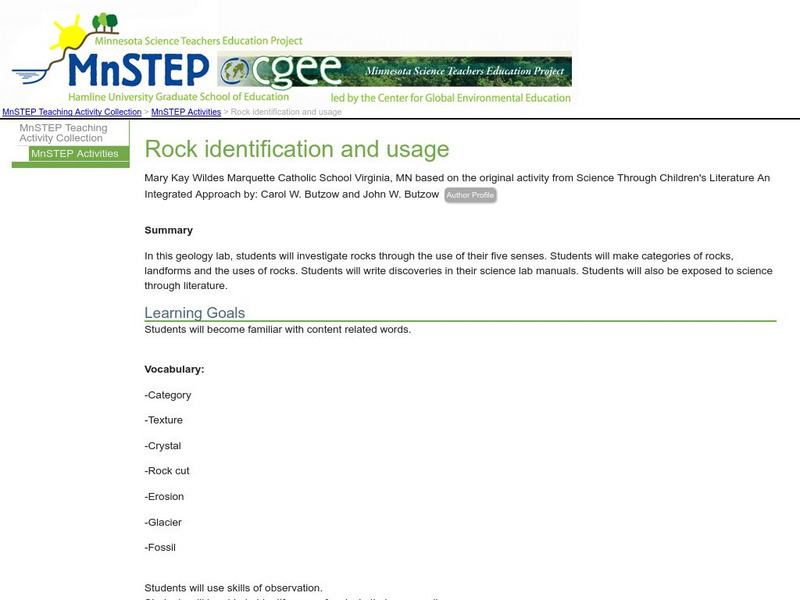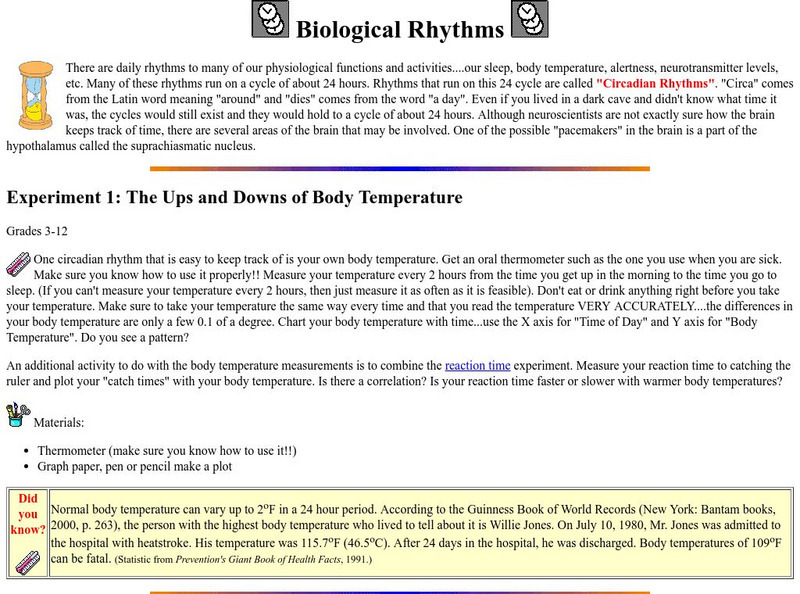Hi, what do you want to do?
Next.cc
Next: Solar Energy
Engage in the activities provided to learn how you can use the sun as a source of energy. Click on the links for further exploration.
National Gallery of Art
National Gallery of Art: Two Faces of Paul Gauguin
Students will examine Paul Gauguin's self-portraits and letters to learn about the individual who created them and consider how first-person art forms (self-portraits, diaries, letters, journals) aid the process of self-discovery. Then,...
Khan Academy
Khan Academy: Reflect: Serendipity
Students will answer reflection questions based on previous videos about career journeys.
Curated OER
National Park Service: Yellowstone Scavenger Hunt
In order to complete this internet hunt on Yellowstone, students must peruse through the park's website to find the answers to the questions. A very interesting hunt and one that students will be sure to enjoy!
Science Education Resource Center at Carleton College
Serc: Mn Step: Rock Identification and Usage
In this activity, students explore rocks using their five senses. They sort them into groups, learn about landforms, and learn how rocks are used by humans. Their discoveries are recorded in their science notebooks.
Other
Science Alive: Making and Sizing Paper
In this activity learners will learn to make and size paper. The activity can be used as an introductory activity to promote student interest. In the early part of the 20th century, the field of chemistry was very involved in industrial...
Famous Scientists
Famous Scientists: Louis Agassiz
This article gives a complete biography of Louis Agassiz. Learn about his discoveries on glacier activity and extinct fishes changed enriched our knowledge base.
NASA
Nasa: Finding the Distances Between Planets
NASA site features a lesson plan that teachers can use to help their students see how far they are from each of the planets.
University of Washington
Neuroscience for Kids: Biological Rhythms
Site contains experiments students can do in the classroom to enhance their understanding of biological rhythms.
HotChalk
Hot Chalk: Lesson Plans Page: Science Experiment: Carrot Tops
"Can a plant grow from just the top of a carrot?" Students will engage in this lesson plan to find out.










